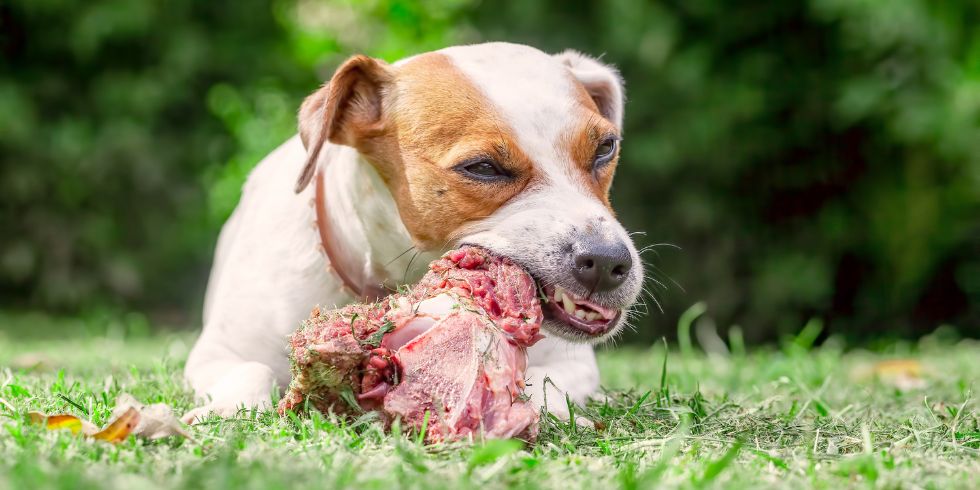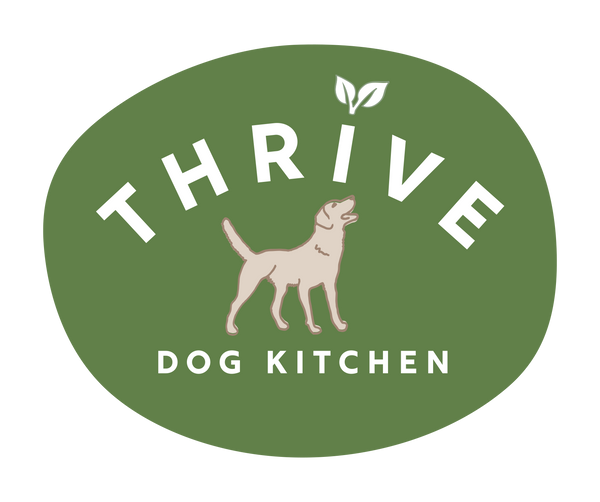
The Ultimate Guide to Raw Meaty Bones: A Natural Solution for Your Dog's Health
Share
Between work, staying active, and maintaining a social life, finding time to optimise your dog's nutrition can feel overwhelming. If you've heard about raw meaty bones but felt unsure about where to start, you're not alone. This comprehensive guide will walk you through everything you need to know to make informed decisions about incorporating this natural, beneficial addition to your dog's diet.
Quick Navigation
- Benefits of Raw Meaty Bones
- Choosing the Right Bones
- Safety Guidelines
- Getting Started
- Alternative Options
The Natural Power of Raw Meaty Bones
Raw meaty bones aren't just treats – they're a powerhouse of nutrition and enrichment for your dog. Here's why they deserve a place in your pup's diet:
Natural Dental Care That Actually Works
Forget the marketing hype about kibble cleaning your dog's teeth. Raw meaty bones provide genuine mechanical cleaning through natural chewing action, helping remove plaque and tartar buildup. It's like a natural toothbrush designed specifically for your dog.
Mental Stimulation for Your Active Dog
Just as you enjoy your outdoor adventures and fitness routines, your dog needs mental and physical stimulation too. Chewing bones is an instinctual behavior that provides excellent mental enrichment and jaw exercise – perfect for those times when you're catching up on work emails or seeking a bit of quiet time.
Premium Nutrition from Nature
Raw meaty bones deliver calcium and phosphorus in their most bioavailable form – far better than synthetic supplements. They're packed with collagen, glucosamine, and chondroitin, supporting your dog's:
- Joint health
- Immune system
- Bone strength
- Digestive wellness
Understanding Your Dog's Chewing Style
Just like humans, dogs have different approaches to their food. Knowing your dog's chewing style helps you choose the safest and most appropriate bones:
- Gummers: The gentle souls who prefer to lick and slowly soften their bones
- Nibblers: Taking their time with small, careful bites
- Methodical Chewers: The analysts who thoroughly inspect and gradually break down their bones
- Champion Chompers: Dedicated chewers who work steadily until the job is done
- Gulpers: The enthusiastic eaters who need extra supervision and larger bones
Choosing the Perfect Bone for Your Dog
In New Zealand, we're fortunate to have access to a diverse range of raw meaty bones from a variety of sources including sustainably managed wildlife. Many of these options come from ethical hunting and pest management programs, supporting both environmental conservation and your dog's natural diet.
Small Breeds
- Rabbit parts
- Duck feet and necks
- Chicken feet and necks
- Chicken frames
Medium Breeds
- Duck frames
- Lamb brisket
- Chicken frames
- Turkey necks
- Pork tail
- Veal brisket
Large Breeds
- Turkey legs
- Venison brisket
- Veal neck
- Goat brisket
- Duck frames
- Wallaby pieces
Safety First: Making Bone Time Stress-Free
Essential Safety Guidelines
- Choose bones larger than your dog's head
- Always supervise bone time, even with experienced chewers
- Feed bones outside or in a designated area
- Separate dogs during bone time to prevent resource guarding
Understanding the Risks
While dogs are naturally designed to eat bones, it's important to be aware of potential risks:
- Splintering: All bones can splinter, regardless of whether they're raw, air-dried, or freeze-dried. Always monitor your dog to ensure they're not breaking off sharp pieces.
- Choking: While dogs have naturally wide esophagi designed for bone consumption, choking is still possible. The good news? Dogs can typically regurgitate bone material if needed – though this isn't something to rely on.
- Dental Issues: All bones, in particular, hard recreational bones (like weight-bearing bones), can potentially fracture teeth.
- Digestive Concerns: Some dogs may experience constipation or digestive upset when first introducing bones. Start slowly and monitor your dog's response.
Real Talk: In over a decade of feeding our own dogs raw meaty bones, serious incidents have been extremely rare…only one. However, being informed about these risks helps you make the best decisions for your dog and know what to watch for.
Special Considerations
- Dogs with dental work need softer options
- Those with pancreatitis should avoid marrow bones
- Fresh or new to raw feeding? Book a consultation to create a safe transition plan
Getting Started: Your Action Plan
How Much?
If you're feeding a fresh food diet, aim for 10-12% bone content. Your dog's digestion will tell you if you're on the right track:
- Loose stools? Slightly increase bone content
- Hard, chalky stools? Reduce the amount
Pro Tips for Busy Pet Parents
- Prep bones in batches and freeze them
- Schedule bone time after walks or during your work-from-home days
- Use bone time as an opportunity for training or quiet time
Can't Do Bones? No Worries
We get it – bones aren't for everyone. Here are some excellent alternatives that still provide the calcium your dog needs:
- High-quality bone meal
- Ground eggshells
- Calcium citrate supplements
These alternatives are far more bioavailable than plant-based calcium sources like leafy greens.
Ready to Give Raw Meaty Bones a Try?
Starting something new can feel daunting, but you don't have to do it alone. At Thrive Dog Kitchen, we're here to support your journey to better dog nutrition:
- Book a consultation to create a personalized plan
- Check out our frozen whole food blends for an easy starting point
- Join our community of health-conscious pet parents
Remember: Your dog's body is naturally designed to enjoy and process raw meaty bones. With the right knowledge and preparation, you can confidently add this natural, beneficial element to their diet.
Need more guidance? Contact us to learn how we can help you create the perfect nutrition plan for your dog.
